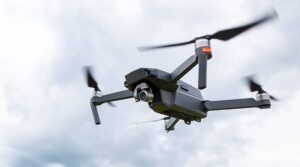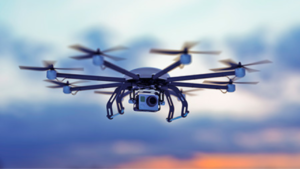Drones, or unmanned aerial vehicles (UAVs), have become increasingly popular in recent years due to their versatility and range of applications. They are used in a wide range of industries, including agriculture, mining, construction, and film-making. Drones have revolutionized the way we view and capture images from above, making it easier to see and monitor landscapes, buildings, and more.
With advancements in technology, drones have become more sophisticated, and their capabilities have expanded. In this article, we will discuss the latest developments in drone technology.
Developments in Drone Technology
Improved Sensors and Cameras
One of the significant advancements in drone technology is the improvement in sensors and cameras. Today’s drones are equipped with high-quality cameras that can capture high-resolution images and videos. These cameras come with features such as image stabilization and autofocus, which help in capturing stable and sharp footage.
In addition to cameras, drones also use various sensors such as GPS, altimeters, and accelerometers. These sensors help drones to navigate and maintain their altitude, even in challenging weather conditions.

Artificial Intelligence and Machine Learning
The use of artificial intelligence (AI) and machine learning (ML) has transformed the capabilities of drones. These technologies allow drones to perform complex tasks and analyze data in real-time. For instance, drones can use AI algorithms to detect and track objects, making them useful in surveillance and security applications.
Machine learning algorithms can help drones learn from previous data, allowing them to make decisions autonomously. This technology is useful in applications such as agriculture, where drones can collect data on crop health and use this data to make recommendations on irrigation and fertilization.
Increased Flight Time and Range
Another significant development in drone technology is the increase in flight time and range. With the use of more powerful batteries, drones can now fly for longer periods, making them more useful in applications such as surveying, inspection, and search and rescue.
Similarly, advancements in radio communication and GPS technology have allowed drones to fly farther and more accurately. These developments have expanded the range of applications for drones, such as delivery services and environmental monitoring.
Smaller and More Portable Drones
As drone technology has advanced, drones have become smaller and more portable. Miniature drones can now fit in the palm of your hand and can be easily transported in a backpack. These small drones are useful for applications such as filming and photography, as they can access tight spaces that larger drones cannot.
Autonomous Drones
The development of autonomous drones has revolutionized the drone industry. These drones can navigate and perform tasks without human intervention, making them useful in applications such as surveying, inspection, and search and rescue.
Autonomous drones use a combination of sensors, GPS, and AI algorithms to make decisions in real-time. For example, a drone can fly over a construction site and use its sensors to detect changes in the environment. The drone can then use AI algorithms to analyze this data and make decisions on the best course of action.
Swarm Technology
Swarm technology involves the use of multiple drones working together to achieve a common goal. This technology has been used in applications such as search and rescue, where drones can cover large areas quickly and efficiently.
Swarm technology also has applications in agriculture, where multiple drones can work together to cover larger areas and collect more data. This technology has the potential to revolutionize the way we use drones, making them more efficient and effective in a range of applications.
Environmental Monitoring
Drones have become increasingly useful in environmental monitoring applications. They can collect data on air and water quality, weather patterns, and land use. This data can then be used to make informed decisions on environmental management and conservation.
Drones can also be used to monitor wildlife populations, helping to identify threats and track migration patterns. This technology has the potential to revolutionize the way we monitor and manage our environment, making it easier to detect and address environmental issues before they become major problems.

Delivery Services
The use of drones for delivery services has been a hot topic in recent years, with companies such as Amazon and Google testing the use of drones for delivering packages. Drones have the potential to revolutionize the delivery industry, making it faster, cheaper, and more efficient.
However, there are still significant regulatory and safety concerns that need to be addressed before drones can be used for commercial delivery services. The Federal Aviation Administration (FAA) in the United States has strict regulations governing the use of drones for commercial purposes, including the requirement for pilots to have a remote pilot certificate.
3D Mapping and Surveying
Drones have become increasingly useful in 3D mapping and surveying applications. They can be used to create detailed 3D maps of buildings, terrain, and other structures, making it easier to visualize and analyze data.
This technology has applications in a range of industries, including construction, mining, and urban planning. Drones can collect data more quickly and efficiently than traditional surveying methods, making it easier to gather accurate and up-to-date information on land use and development.
Improved Safety Features
As drone technology has advanced, safety features have become an essential consideration. Today’s drones are equipped with features such as collision avoidance systems, which use sensors to detect obstacles and avoid collisions.
Drones also have features such as automatic return to home, which allows the drone to return to its starting point if it loses communication with the operator or if the battery is running low. These safety features help to minimize the risk of accidents and ensure that drones can operate safely in a range of environments.
Conclusion
The advancements in drone technology have revolutionized the way we use drones, making them more versatile and efficient than ever before. Drones have applications in a range of industries, including agriculture, construction, mining, and film-making.
The latest developments in drone technology, such as improved sensors and cameras, AI and machine learning, increased flight time and range, and autonomous and swarm technology, have expanded the capabilities of drones and opened up new possibilities for their use.
However, there are still significant regulatory and safety concerns that need to be addressed before drones can be used for commercial delivery services and other applications. As drone technology continues to evolve, it is essential to ensure that safety and regulatory concerns are addressed to ensure that drones can be used safely and effectively in a range of applications.










